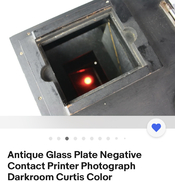DREW WILEY
Member
- Joined
- Jul 14, 2011
- Messages
- 14,561
- Format
- 8x10 Format
About 20 yrs ago I had a former assistant to a notable Hollywood photographer visit my office several time both with 5X7 Kodachromes of famous actors and actresses of the 40's and 50's, still vivid, but also many sets of 5X7 tricolor camera studio negatives which Technicolor used to make their big advertising stills for movie promotion. They had their own in-house dye transfer still printing operation, not just the moving image side of it. The problem was those old negs were made on dimensionally unstable acetate film, and proved impossible to re-register for later dye transfer printing purposes. Only when PS developed a snap alignment feature could fresh prints be made; and then it was via inkjet. But he never could market those because there was a right's dispute who actually owned the rights to those old shots - the big Studios themselves, or that assistant personally given them by the original photographer.
As far as generating new still form old Technicolor triple frames themselves, or the full triple sandwich, similar issues. Pretty easy using modern scanners and output, a lot more complicated if trying to replicate the sheer hue purity of actual dye transfer techniques, which Technicolor was a form of. Inkjet can't achieve that.
The folks you're referencing should send it off to Jim Browning to make the separations using his advanced film recording device. The problem with separations, however, is that they ideally need to be matched to a specific printing method - and nobody knows what that might be in some future sense the "archival preservation" has in mind. But retro-separations from an entire movie???
Must have a lot of money. What current black and white film would they use anyway, for that? There are dedicated Hollywood technical sites for those kinds of preservation issues, and no doubt certain trade secrets too.
As far as generating new still form old Technicolor triple frames themselves, or the full triple sandwich, similar issues. Pretty easy using modern scanners and output, a lot more complicated if trying to replicate the sheer hue purity of actual dye transfer techniques, which Technicolor was a form of. Inkjet can't achieve that.
The folks you're referencing should send it off to Jim Browning to make the separations using his advanced film recording device. The problem with separations, however, is that they ideally need to be matched to a specific printing method - and nobody knows what that might be in some future sense the "archival preservation" has in mind. But retro-separations from an entire movie???
Must have a lot of money. What current black and white film would they use anyway, for that? There are dedicated Hollywood technical sites for those kinds of preservation issues, and no doubt certain trade secrets too.







